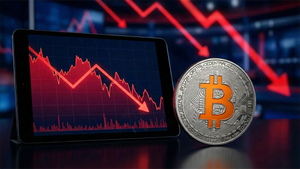
New York, NY – September 26, 2025 – The global coffee market is currently experiencing a significant shake-up as Arabica coffee prices have staged a remarkable rebound, reaching levels not seen in over a decade. This surge is primarily attributed to a dramatic and sustained decline in Intercontinental Exchange (ICE) certified stocks, signaling a tightening supply amidst resilient global demand. The development has sent ripples through the soft commodity markets, raising concerns among roasters, distributors, and consumers alike about future availability and pricing.
The recent price trajectory underscores a critical imbalance in the fundamental supply-demand dynamics of one of the world's most consumed commodities. With inventories at historical lows and adverse weather continuing to plague key producing regions, the market is bracing for a prolonged period of elevated prices, potentially reshaping consumer habits and strategic planning for major industry players.
The Perfect Storm: Depleting Stocks and Weather Woes Drive Price Rally
Arabica coffee futures have been on an impressive upward march, with the ICE Arabica futures contract reaching $2.75 per pound by late September 2024, representing a 46% increase from the start of that year and a staggering 91% surge over the preceding 12 months. This momentum carried into 2025, with prices hitting an all-time high of 440.85 US cents per pound in February 2025. As of September 26, 2025, Arabica coffee stood at 374.84 US cents per pound, reflecting a 0.94% increase from the previous day, maintaining its elevated position.
The primary catalyst for this meteoric rise has been the precipitous fall in ICE-monitored certified Arabica coffee stocks. These inventories, crucial for the futures market, plummeted to their lowest levels since 1999 in late 2023. The decline has been relentless, with ICE-monitored Arabica inventories falling to a 1.5-year low of 579,961 bags as of September 25, 2025. This drawdown has been exacerbated by the imposition of 50% US tariffs on Brazilian coffee imports, leading American buyers to void new contracts and further tighten US supplies, as Brazil typically accounts for a significant portion of America's unroasted coffee imports. The market has observed minimal coffee being delivered for exchange certification, coupled with increased purchases from existing certified stocks, further depleting available supply.
Beyond dwindling exchange stocks, severe supply-side pressures are intensifying. Extreme weather events, particularly in Brazil, the world's largest Arabica producer, have severely impacted crop yields. Brazil experienced a brutal combination of historic droughts and heavy rains in 2024, leading to a dramatic fall in harvests. The nation's crop forecasting agency, Conab, on September 4, 2025, cut its Brazil 2025 Arabica coffee crop estimate by 4.9% to 35.2 million bags. Similarly, the Vietnam Coffee and Cocoa Association reduced its 2024/25 Vietnam coffee production estimate to 26.5 million bags. Rising labor and fertilizer costs are also squeezing producers, further dampening future output prospects. Volcafe projects a global Arabica coffee deficit of -8.5 million bags for the 2025/26 season, marking the fifth consecutive year of deficits.
Despite these significant supply constraints, global demand for coffee has remained remarkably robust. Coffee's cultural entrenchment and low-price elasticity mean that consumption changes only marginally in response to price increases. Growing consumption, particularly from younger demographics, shows no signs of abating, leading to a significant drawdown in global inventories, which are now at 20-year lows. This confluence of dwindling stocks, adverse weather, rising production costs, and inelastic demand has created the perfect storm for soaring Arabica coffee prices.
Corporate Fortunes: Who Wins and Who Loses in a High-Price Environment
The dramatic surge in Arabica coffee prices is creating a clear divide between winners and losers across the global coffee supply chain. For multinational coffee roasters and distributors, higher raw material costs translate directly into increased operational expenses, potentially squeezing profit margins if they cannot fully pass these costs onto consumers. Conversely, major coffee-producing nations and, to some extent, individual farmers, stand to benefit from the elevated prices, provided their crops are not severely impacted by adverse weather.
Among the publicly traded companies, major coffee roasters and retailers like Starbucks Corporation (NASDAQ: SBUX) and JDE Peet's (AMS: JDEP) will likely face significant headwinds. While these companies often hedge their coffee purchases, prolonged high prices will eventually filter through their supply chains, leading to higher input costs. They may be forced to either absorb these costs, impacting profitability, or raise retail prices, which could affect consumer demand, albeit coffee demand is relatively inelastic. Smaller, independent coffee shops, which have less hedging capacity, are particularly vulnerable and may struggle to maintain margins without substantial price increases.
On the other hand, agricultural commodity traders and some integrated food companies with robust sourcing operations might see mixed results. Companies like Nestlé S.A. (SWX: NESN), while a massive buyer of coffee for brands like Nescafé, also has diversified operations that might buffer the impact. Their scale allows for better hedging and direct sourcing agreements, potentially mitigating some of the volatility. However, the overall trend of higher prices will still be a cost factor.
The true beneficiaries, at least in theory, are the coffee farmers and producing nations. Countries like Brazil, Colombia, and Vietnam, despite facing production challenges, will see increased revenue per pound for the coffee they do manage to harvest and export. However, the benefits at the farmer level are often diluted by intermediaries and the impact of reduced yields due to weather. For example, while the price per bag is high, a Brazilian farmer whose crop was decimated by drought might not see a net financial gain. Furthermore, the higher prices could incentivize increased planting in the long run, potentially leading to future oversupply if demand doesn't keep pace.
Broader Implications: A Shifting Landscape for Global Coffee
The current Arabica coffee price rally is not an isolated event but rather a stark indicator of broader, systemic challenges facing the global agricultural commodity markets, particularly soft commodities. This event fits squarely into a trend of increasing supply volatility driven by climate change, geopolitical factors, and evolving trade policies. The sustained decline in ICE certified stocks highlights a critical vulnerability in the global supply chain, where transparent and accessible inventories are shrinking, making the market more susceptible to price spikes.
The ripple effects of this price surge are extensive. Competitors in the beverage industry might see a shift in consumer preferences if coffee prices become prohibitively high, potentially boosting demand for alternatives like tea or other non-coffee beverages. This could impact companies like Unilever PLC (NYSE: UL), which has a significant tea portfolio. Furthermore, the situation could accelerate innovation in coffee production, including the development of more resilient coffee varieties or sustainable farming practices to mitigate climate risks.
Regulatory and policy implications are also significant. The 50% US tariffs on Brazilian coffee imports, which have contributed to the drawdown in ICE inventories, demonstrate how trade policies can have immediate and tangible effects on global commodity flows and prices. Governments in producing countries may face pressure to support farmers through subsidies or infrastructure development to stabilize production. Consumer protection agencies in importing nations might also scrutinize price increases at the retail level.
Historically, coffee markets have experienced periods of extreme volatility, often linked to weather events in Brazil, such as the major frost in 1975 or droughts in the 1990s. The current situation bears resemblance to these past crises in its intensity, but with the added complexity of dwindling exchange stocks and the pervasive threat of climate change making weather patterns more unpredictable. Unlike past events that might have been more episodic, the current challenges appear to be more structural and long-term, suggesting that the era of cheap coffee may be drawing to a close.
What Comes Next: Navigating a Volatile Coffee Future
The immediate future of Arabica coffee prices remains highly dependent on several critical factors, primarily weather patterns in key growing regions and the replenishment of exchange stocks. In the short term, prices are likely to remain elevated, supported by the ongoing supply deficit. Any further adverse weather events in Brazil or other major producers could trigger additional price spikes, while a significant improvement in harvest prospects could provide some relief, as observed in recent weeks where prices showed a slight downward trend after a surge.
Longer-term, the market faces a period of potential strategic pivots and adaptations. Coffee roasters and distributors will need to re-evaluate their sourcing strategies, potentially diversifying their supply chains to reduce reliance on single regions or adopting more robust hedging mechanisms. Investment in sustainable farming practices and climate-resilient coffee varieties will become paramount for producers to ensure future supply stability. This could present opportunities for agricultural technology companies focused on climate-smart solutions.
Potential scenarios range from a continued upward trajectory if supply issues persist and demand remains strong, to a moderate correction if new crops exceed expectations and exchange stocks begin to rebuild. The International Coffee Organization (ICO) anticipates average Arabica prices to hover in the 280-310 cents per pound range in 2025, suggesting continued high prices. However, the USDA's Foreign Agriculture Service (FAS) projects a 2.5% increase in world coffee production for 2025/26, albeit with a 1.7% decrease in Arabica production, indicating a complex and potentially divergent future for different coffee varieties.
Market opportunities may emerge for companies that can innovate in coffee alternatives or processing technologies that maximize yield from smaller harvests. Challenges will persist for those heavily reliant on conventional sourcing methods and unable to adapt to the new pricing reality. The market will closely watch for any significant changes in crop forecasts, inventory reports, and global economic indicators that might influence consumer demand.
Wrapping Up: A New Era for Coffee Economics
The recent rebound in Arabica coffee prices, fueled by critically low exchange stocks and relentless supply pressures, marks a significant turning point for the global coffee market. The confluence of climate change impacts, shifting trade policies, and unwavering consumer demand has created an environment where the days of abundant, cheap coffee may be a relic of the past. This event highlights the increasing fragility of global agricultural supply chains and the profound impact that environmental and geopolitical factors can have on everyday commodities.
Moving forward, the market will be characterized by heightened volatility and a greater emphasis on supply chain resilience and sustainability. Investors should closely monitor crop reports from major producing nations, particularly Brazil and Vietnam, as well as the weekly updates on ICE certified stock levels. The strategic responses of major coffee companies – in terms of sourcing, hedging, and pricing – will be key indicators of how the industry adapts to this new economic reality. Furthermore, any shifts in consumer behavior due to sustained high prices will be a crucial factor to watch in the coming months. The coffee world is entering a new era, one defined by scarcity, higher costs, and an urgent need for adaptation.
This content is intended for informational purposes only and is not financial advice.




